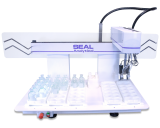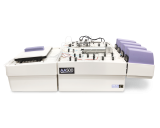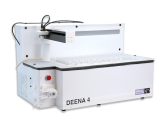As a critical but time-consuming step in common sample preparation, pH analysis and adjustment is a perfect candidate for automation in labs of all sizes. Learn more about our scalable MiniLab platforms for pH and other common tests.
Why is pH Testing Important?
pH testing is a key element of environmental, agricultural, and commercial sample analysis, providing critical insights into water quality, soil health, and process control. As a fundamental measure of acidity or alkalinity, pH directly affects the chemical behavior, solubility, and biological availability of many nutrients and pollutants. In environmental analysis, monitoring pH levels is essential for ensuring ecosystem balance, safeguarding aquatic life, and maintaining compliance with water quality regulations for drinking water, wastewater, and industrial discharge. Whether assessing river health, estuarine acidification, or wastewater treatment efficiency, pH testing is often the first step in understanding broader environmental conditions.
In agriculture, pH analysis plays a pivotal role in optimizing soil fertility and crop productivity. Soil pH influences nutrient uptake and microbial activity, directly impacting plant growth and yield. Precise pH measurements also guide fertilizer application, helping farmers balance soil conditions to maximize efficiency while minimizing environmental runoff. Beyond soil testing, pH monitoring in plant tissues and growth media is increasingly critical for modern precision agriculture and hydroponic systems, ensuring ideal growing environments and sustainable agricultural practices.
pH testing is not only a vital analysis in its own right but also a preliminary step required for the accurate measurement of many other nutrients and analytes along with pH adjustment. Automating pH testing and adjustment in high-throughput laboratories, particularly in soil science and environmental research, streamlines workflows, improves accuracy, and reduces the burden of repetitive manual tasks. SEAL Analytical’s expertise in robotics and automation offers solutions that integrate pH testing seamlessly into sample analysis pipelines, helping labs increase efficiency and deliver reliable results.
What's the Automation Advantage?
| 1. Increased Efficiency and Throughput: Automating pH testing and adjustment significantly accelerates sample processing, allowing laboratories to handle high volumes of samples without sacrificing accuracy. This efficiency is especially valuable for large-scale operations such as soil, water, and wastewater testing facilities, where time-sensitive results are critical. | 2. Reduced Analyst Workload: Automation frees analysts from the repetitive task of manual pH testing and adjustment, allowing them to focus on more value-added activities like data interpretation and method development. With robotic handling systems, labs can untether analysts from benchtop operations, creating a more streamlined and productive workflow. | |
| 3. Enhanced Accuracy and Consistency: Manual pH testing is prone to variability, particularly when performed across multiple analysts or shifts. Automated systems deliver consistent measurements and adjustments across all samples, minimizing human error and ensuring reliable results that meet regulatory and quality assurance standards. | 4. Seamless Integration with Other Tests: Automation systems designed for pH analysis can easily accommodate additional tests like conductivity, alkalinity, turbidity, and color within the same workflow. This multi-analyte capability maximizes instrument usage, reduces bottlenecks, and simplifies lab operations, providing a comprehensive solution for laboratories managing diverse testing needs. |
SEAL's Expertise in Automated pH Analysis
With over 35 years of expertise in developing robotic handling platforms, SEAL Analytical has become a trusted leader in automating pH analysis and adjustment. Our robotic solutions, including the MiniLab series from SEAL Netherlands (formerly ROHASYS), are designed to meet the needs of modern laboratories by combining precision engineering with advanced automation. By ensuring stable platforms, exact mechanical alignment, and flexible workflows, SEAL systems deliver reliable and repeatable results for high-throughput pH testing.
Our experience extends beyond environmental applications to include diverse fields such as soil science, where buffer additions and other additional steps vary from lab to lab. SEAL's robotic handling systems are specifically engineered to automate complex, repetitive tasks like pH adjustment, freeing up analyst time and reducing the risk of human error. This commitment to precision, innovation, and robust engineering ensures that SEAL Analytical remains the partner of choice for laboratories seeking efficient, accurate, and scalable pH testing solutions.
Key pH Methods and Features
SEAL Analytical’s expertise in pH analysis and adjustment coincides with approved methods. Common reference methods include:
Beyond pH measurement, SEAL Analytical’s MiniLab systems support an array of automated processes, including barcode scanning, filtration, dilution, addition of buffers and extract solutions, pH adjustment, and measurement of conductivity, turbidity, alkalinity, and color.
Compare our Analyzers
Explore the capabilities of each of our product lines below. Our analyzers and robotic systems are capable of analyzing a wide variety of analytes on a single platform. Select a product line to learn more about the capabilities of each system.
Additional Resources
Ready to Optimize Your pH Analysis?
Request Information
Fill out the form below to request information about our products and services.


.png?resolution=160x128&quality=95)

